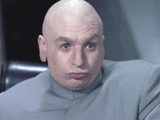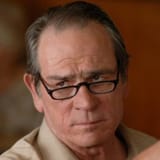>>213984419 (OP)
It's a very colorful film, as your montage perfectly demonstrates. Night is dominated by purples and blacks (especially when Sally is being chased, the headlight still gives us a taste of that), dawn is heralded by hot, sickly orange, (seen in both beginning and end, as shown here), and the day is dominated by the blue and green of nature, but also includes many other hues. We are seeing one full day in full color.
At 80 minutes, the film uses every last second with maximum effect. Repeat viewings reward the attentive viewer, as they are many rhymes and resonances throughout the story, and the production design. Just one example of this: When they check out the old abandoned Hardesty place, Sally comments on an ancient wallpaper that she remembers seeing when staying there as a little girl, a pattern including zebras and other animals. There are "animals on the wall". A short time later, when Kirk enters the other house, he sees a bunch of taxidermy in the central area. Both houses have animals on the walls, within a few minutes of each other.
The film begins with several distinct "openings", and spends a good 5-6 minutes of its runtime on them. For a short feature, this is very precious time, so the elements had better work together perfectly to establish mood and begin story while doing standard credit sequence stuff. They do. The "disclaimer" tricks the newbie into thinking this might possibly be based on a true story. The hitchhiker/photographer is heard doing his thing, then the film knocks us over the head with the corpse sculpture. (The very attentive/prescient viewer now has just enough information to guess ahead of time that the grave robber and the hitchhiker are the same person) Then the opening credits proper play, again showing heat, sunlight, solar flare. This is a hot film. Radio narration of dread throughout. This is all "music", and all the elements work together, as I've tried to show in this chart.



